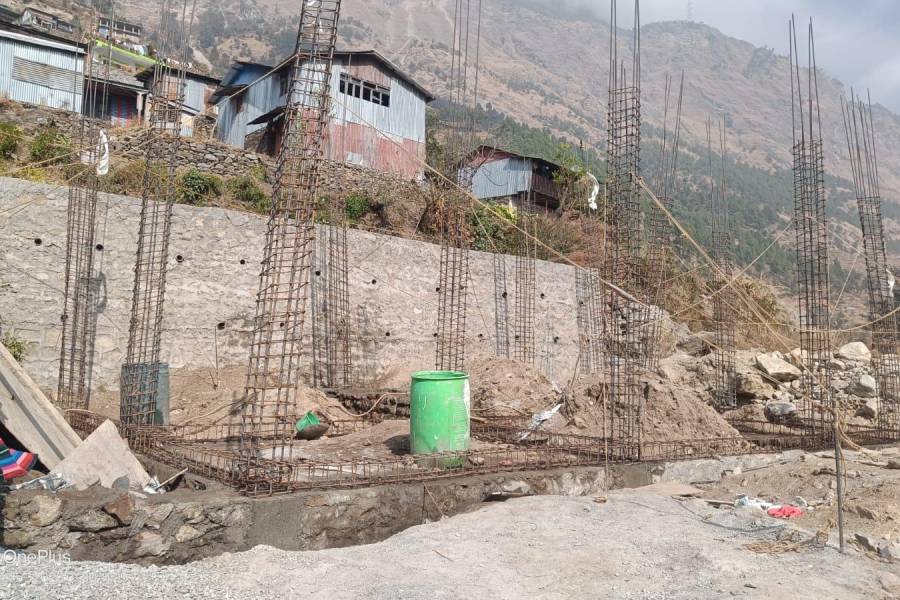Kathmandu. The 216-megawatt Upper Trishuli-1 Hydropower Project under construction in Rasuwa has said that it has spent about Rs 170 million so far in the affected areas through the community support program.
The project promoter, Nepal Water and Energy Development Company, has been supporting the affected areas through programs such as education, health, drinking water, road infrastructure, cultural preservation, relief distribution, livelihood and income generation under the Corporate Social Responsibility and Indigenous Community Planning Program, informed Technical Director Giriraj Adhikari.
The dam and other structures of the project in Hakuma, Amachodingo Rural Municipality-1 of Rasuwa, and the underground power house and other structures in Uttargaya Rural Municipality-1 are under construction with direct foreign investment led by a Korean company. .
Upper Trishuli-1, where the generated electricity is used for domestic consumption, is the largest project under construction with direct foreign investment.
In the project area, which was badly affected by the 2072 BS earthquake, the company had conducted programs such as distributing relief materials to earthquake victims and constructing temporary housing, constructing buildings for schools and health institutions, rescue by helicopter, and health camps.
The company stated that it has implemented a separate plan by paying attention to the location, environment, and cultural characteristics of the indigenous communities affected by the project.
Through the said plan, programs selected by the communities themselves are being implemented A budget has been arranged for this. It is said that more than 20 million rupees have been spent through this so far.
The company’s Chief Executive Officer, Byong Su Min, said that the community support program has been implemented with special attention to improving the economic and social conditions of the project-affected people, employment and livelihood, and development of the area.
The project is selecting projects based on priority as per the demands of the local residents and is conducting the support program, and he said that this will be continued.
The project has spent 78.614 million rupees to construct a bailey bridge on the Trishuli River in Hakubesi. After the construction of the bridge, road access has been established for the residents of Haku area in Wards 1 and 2 of Amachodingmo Rural Municipality, making it easier to travel to the district headquarters Dhunche, Nuwakot and Kathmandu.
1.857 million has been spent on road construction in the affected area. In addition, it is reported that an additional 7 million has been spent on the construction of the Dhunche-Kholdol road.
Works such as construction of school buildings and distribution of educational materials have been carried out for the educational improvement of the affected area. In addition, one teacher has been provided to each of the three schools in Haku since 2018.
Technical Director Adhikari informed that the project has been supporting the construction of buildings, including monasteries, and other programs to preserve and promote the cultural traditions of the indigenous peoples of the region.
The promoter of the project, Nepal Water and Energy Development Company, has shares invested in by the Korean government-owned Koen, the International Finance Corporation under the World Bank Group, and others.
Financial management for the project has been arranged to raise 70 percent from debt and 30 percent from equity. Nine international financial institutions have signed an agreement to invest 453.2 million US dollars in the project, which has a total estimated cost of 647.3 million US dollars (including interest during the construction period).
The remaining amount has been raised from equity. The project will generate 1.533 billion units of energy annually. It is stated that 38.75 percent of the total annual energy will be generated in the winter season and 61.25 percent in the rainy season.
The generated energy will be connected to the Trishuli-3 ‘B’ Hub Substation being constructed by the Nepal Electricity Authority and flow into the national transmission system. The power purchase agreement between the company and the authority has been concluded.
The project is considered very attractive for the country’s electricity system as it is close to the Kathmandu load center and will generate 104 megawatts of electricity even in winter, when electricity demand is high.
The project will generate 104 megawatts of stable (farm) energy throughout the year. The target is to complete the construction of the project by Mangsir 2083 BS.























प्रतिक्रिया दिनुहोस्